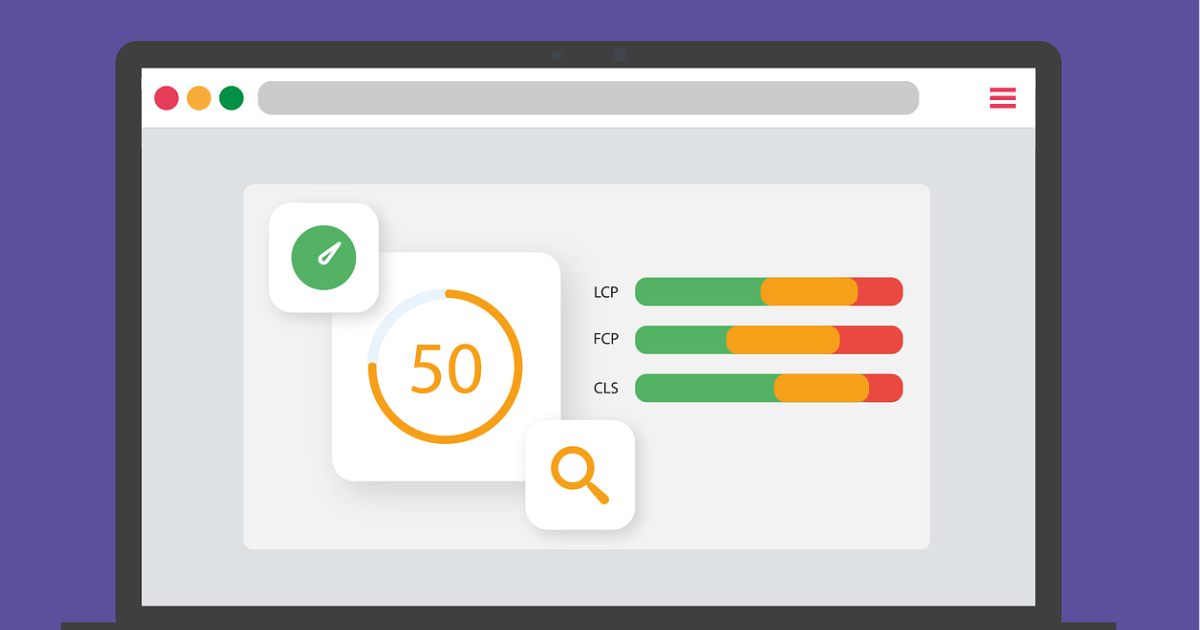“I want to know more about SEO search intent!”
“How can we create content that captures the user’s search intent?”
Isn’t this what you think?
“Search intent” is one of the most important concepts in SEO.
No matter how good your content is, if it doesn’t match the user’s search intent, it won’t rank high.
However, even if you understand the importance, it can be difficult to create content that captures search intent.
Therefore, in this article, we have summarized the following contents.
By reading this article, you will understand the idea of “search intent”, which is the basis of SEO, and you will be able to read the exact intent.
“I want to create content that satisfies users.”
“I want to write articles that will be ranked high.”
If you are a web writer or SEO person who is thinking like this, please refer to this article.
Table of contents
What is search intent?
Search intent is what a user wants to achieve when performing a search.
You can also call it “purpose of search.”
Whenever we use a search engine, we are always trying to solve some kind of question or problem.
*In this article, the search engine is Google.
For example, imagine a situation where you search for the keyword “battery dead.”
The reason why the user searched for this keyword is probably because “my car’s battery died and it stopped working,” right?
In other words, the user’s search intent here is “I want to know what to do when the battery is dead!”
Every search keyword has this kind of search intent.
However, search intent is not always the same.
In the case of the keyword “acne,” users can have multiple search intentions, such as “I want to cure acne,” “I want to prevent acne,” and “I want to know the mechanism behind acne.”
In SEO, it is important to accurately capture search intent and reflect it in the content.
Note that search intent is also called search intent.
Why search intent is important for SEO
So why is search intent important for SEO?
In conclusion, content that does not respond to search intent is not needed by users or Google.
If Google doesn’t need it, it won’t show up high in search results.
Think about it for a moment: If none of the pages displayed in Google’s search results answered your questions or worries, would you use Google?
If you can’t solve your problems, you will probably try to solve them using other search engines or SNS.
Google wants as many users as possible to use its search engine.
For this reason, we have created a system that “accurately understands the user’s intent from search keywords and provides the most appropriate pages and useful results that meet their needs.”
It is important to understand the intent of the search in order to return the most appropriate answers. (snip)
Google also tries to understand what kind of information people are looking for. Are your searches specific or broad? Are there any search keywords that indicate the need for specific information, such as “reviews,” “images,” or “opening hours?” Are you searching for trending words that indicate you’re looking for content published that day? Are you searching for nearby businesses or information about your current location? These things are also analyzed using algorithms.Quote source: Google Search – How the search algorithm works
Content that responds to search intent contributes to achieving Google’s goals, so it is naturally more likely to be ranked higher.
In fact, it is stated in the “Search Quality Evaluation Guidelines” that “degree of match with search intent” is a factor in determining rankings (referred to as Needs Met evaluation).
reference:Google Search Quality Evaluation Guidelines
Therefore, in SEO, it is important to first accurately understand the user’s search intent.
Search intent can be divided into several types.
We will explain this in the next chapter, so be sure to check it out.
4 classifications of search intent in SEO
SEO typically divides keywords into four search intents.
According to Google, there are four main moments when people start searching.
These are also called micro-moments, and search intent in SEO is generally considered in terms of these four types.
reference: Think with Google – Micro-moments: Micro-moments that occur in various scenes of life
The pages displayed in search results will differ depending on the four intentions, and the content that should be created will also change.
Let’s examine each in a little more detail.
Type 1. Know queries
Know queries are keywords (queries) that contain the search intent of “I want to know or get information about a certain topic.”
Below is an example of a Know query.
- “What is SEO?”: I want to know what SEO is.
- “President of the United States”: I want to know who the president of the United States is.
- “Japan’s population”: I want to know what the current population of Japan is.
- “Types of Web Marketing”: I want to know what types of Web marketing there are.
When you search for the Know query “What is SEO,” the search results list articles that explain the meaning and overview of “SEO” and what countermeasures are available.
Type 2. Do queries
A Do query is a keyword with a search intent of “I want to do something or take an action.”
For example, the following keywords are Do queries.
- “How to make fried rice”: I want to make fried rice
- “Writing structure creation”: I want to create the structure of an article
- “Easy Diet”: Want to diet in an easy way?
- “Self-cut”: I want to cut my own hair
If you search for the Do query “how to make fried rice,” the search results will include pages and videos introducing fried rice recipes.
Type 3. Go query
A Go query is a keyword with the search intent of “I want to go to a specific place/site.”
For example, the following keywords are Go queries.
- “Tokyo Beauty Salon”: I want to go to a beauty salon in Ebisu
- “Nearby convenience store”: I want to go to a nearby convenience store.
- “Amazon”: I want to visit the Amazon site
- “Youtube”: I want to go to the YouTube top page
When you search for “Tokyo hair salon” on Go, the search results show a map of hair salons and a portal site for hair salons.
Type 4. Buy query
A buy query is a keyword with the search intent of “I want to purchase a specific product or service.”
For example, the following keywords are Buy queries:
- “Men’s Suits Mail Order”: Want to buy men’s suits online?
- “Vacuum cleaner recommended”: I want a vacuum cleaner
- “Advertising Agency Comparison”: I would like to ask an advertising agency to operate my advertisement.
- “Mother’s Day Present”: I want to purchase a Mother’s Day present.
If you search for the Buy query “men’s suits mail order,” you will see that the search results include advertisements, mail order sites, and e-commerce sites.
In this way, search intent can be categorized into four categories: Know (want to know), Do (want to do), Go (want to go), and Buy (want to buy).
As you can see by looking at each search result page, the trends of the top-ranked pages and the order of vertical searches are different.
For example, in the Buy query above, the search vertical order is All > Shopping > Images > News > Maps.
The fact that the [Shopping] tab is on the left is proof that the search engine is reflecting the user’s intent to buy something in the results.
In this way, search results reflect user intent.
4 classifications of search queries in SEO
In SEO, there are also “4 classifications of search queries” that are very similar to the “4 classifications of search intent” that we have already introduced.
It’s a bit confusing, but this is the classification of keywords presented by Google in its “Search Quality Evaluation Guidelines,” and the way they are divided is slightly different from the previous one.
However, both are still classifications based on the user’s search intent.
Both are often used in SEO, so be sure to check them out.
The four classifications of search queries are:
- Informational query (information type)
Keywords for information gathering purposes.
Examples: “T-shirt coordination”, “cake recipe”, “American time difference”, etc. - Transactional query (transaction type)
Keywords aimed at specific actions.
Examples: “English conversation app download,” “Hokkaido flight ticket,” “bag sale,” etc. - Navigational query (guided)
Keywords aimed at visiting specific websites.
Examples: “Facebook”, “Wikipedia”, “Search Engine Optimization Starter Guide”, etc. - Visit in person query (area type)
Keywords for visiting/searching for nearby places.
Example: “Gas station”, “ATM”, “Starbucks”, etc.
In the past, three classifications were often used in SEO: information type, transaction type, and guide type.
However, as the number of users using mobile devices to search on the go has increased, the four categories of search queries were created by adding visit-in-person queries, which were derived from guided queries.
From the above, I hope you understand how to understand search intent by dividing it into four categories.
However, in reality, you cannot create high-quality content that is effective for SEO just by understanding these four search intentions.
In order to create content that is effective for SEO, you first need to know what exactly “content that satisfies search intent” looks like.
We will explain this in the next chapter, so be sure to check it out.
What is “content that meets search intent”?
In SEO, “content that satisfies search intent” refers to content that captures not only the explicit intent but also the latent intent.
Explicit intention is the verbalized intention that the user is aware of.
On the other hand, latent intentions are intentions that users are not really aware of, but ultimately want to achieve.
For example, consider the keyword “marketer job description.”
An article that summarizes “marketer’s job content” for this keyword satisfies the explicit intention, but it does not satisfy the latent intention.
Consider why users searched for the keywords “marketer job description.”
Perhaps the intention behind the keyword is “I want to become a marketer.”
This is latent intention.
Therefore, to satisfy the search intent for “marketer job description”, you will need to include the following content.
This kind of content satisfies the user’s latent intentions and makes them think, “Wow, this article is useful!”
To fulfill latent intentions that are not expressed in words,
- “What kind of users search using countermeasure keywords?”
- “What questions will users have next after knowing this information?”
- “What do users ideally want in the end?”
You need to think ahead.
Content that satisfies both intentions solves 120% of the user’s problems, and is therefore likely to rank higher.
3 ways to examine search intent
Here we will introduce three ways to understand search intent using objective information without relying on subjectivity.
I will explain each in detail.
How to check search intent 1. Analyze top pages
Search results pages (SERPs) are full of clues to understand a user’s search intent.
In particular, analyzing top pages is essential to understanding search intent.
The top-ranked pages are those that Google judges to “satisfy the user’s search intent” at that time.
In other words, by looking at the trends and structure of the top pages, you can understand the information you should include in the content you create and the search intentions of users.
First, check the following three points about the top 10 pages.
- content type
Is it a blog article, product page, category page, etc. - Content format
Is it a how-to article, a comparison article, a review, a glossary of terms, etc. - Content angle
For the keyword “muscle training menu”: Is it “for beginners”, does it focus on “menus that can be done at home”, does it focus on “training using equipment”, etc.
By checking these points, you will be able to get a rough idea of the user’s search intent, the content that Google needs, and even the content that you should create yourself.
Also, for blog articles, pay attention to what information is included in the headings (especially H2) of each page.
The key points when analyzing top pages are to be aware of the following two points.
How to check search intent 2. Refer to suggestions and related keywords
Suggestions and related keywords can also be helpful in finding out the search intent.
Suggested keywords are keywords that are displayed as candidates when you enter a certain search keyword.
Related keywords are highly related keywords that are listed at the bottom of the search results screen.
Suggested/related keywords are keywords that users are actually searching for related to the countermeasure keyword.
Therefore, there is a high possibility that the keywords match the interests of the users searching for countermeasure keywords, which can provide hints to find out the search intent.
Research by Backlinko also shows that about a quarter of users choose one of the suggestions displayed when searching on Google.
reference: Backlinko – How People Use Google Search
We recommend using tools to find out search intent using suggestions and related keywords.
When researching search intent, we also use tools to refer to suggestions and related keywords.
However, it is not uncommon for the number of suggestions and related keywords to be enormous.
In that case, the free tool “google keyword planner” to check the search volume and also refer to the size of user needs.
How to check search intent 3. Explore real problems on Q&A sites and SNS
To learn about users’ real concerns, you can use Q&A sites (such as reddit) and SNS (TwitterIt is effective to use search functions such as r’s search function.
Top sites, suggestions, and related keywords are only data used to infer the user’s search intent.
However, questions and consultations received on Q&A sites and SNS reflect the real voices of real users.
It can also be useful in estimating the type of user who searches for countermeasure keywords, so be sure to look for search intent on Q&A sites and SNS as well.
However, even if you use this method to understand search intent, it is meaningless if you can’t use it in your content.
In the next chapter, we will introduce tips on how to utilize search intent in your content.
Two tips for creating content that meets search intent
There are two tricks to creating content that meets search intent.
I will explain each.
Tip 1. Set up a clear persona
If you want to create high-quality content that meets search intent, be sure to set up personas before creating content.
A persona is a fictitious image of a user who uses a product or service.
We’re talking about people who are likely to visit your site and view your content.
By imagining a specific person, you can easily grasp the latent intentions and choose expressions that are more appropriate for the user in your writing.
Persona is
- Search keyword
- Target audience of top sites
- Questioner on Q&A site
It can be inferred from etc.
For example, if you search for the keyword “abs,” you can imagine that young men are searching for it, right?
If you use the keyword “listing advertising effectiveness measurement,” we can assume that corporate marketers are searching for it.
When setting up a persona, you generally set the following items:
If you know someone close to you (a family member, friend, colleague, etc.) who has trouble searching for keywords, you can use that person as your persona.
By considering the following points about the persona you have set up in this way, you will be able to smoothly reach the latent intent.
Once you understand the latent intent, all you need to do is include the information necessary to satisfy it in your content.
Tip 2. Be conscious of comprehensiveness and uniqueness
In order to satisfy the user’s search intent, it is important to be aware of “comprehensiveness” and “uniqueness.”
Even if it is comprehensive, including unnecessary information will lead to users leaving the site.
Therefore, our stance is to focus on the information that the intended users need and include related information.
For example, in this article aimed at “SEO Search Intent,” we intentionally covered the following information:
- Information commonly included in h2 of top pages: “What is search intent?” “Importance of search intent” “How to find out search intent”
- Suggested keywords: “Search intent classification” “Search intent how to investigate”
- Latent intent: “Tips for creating content that meets search intent”
Uniqueness is also important.
That’s because your page may not be the first page a searcher opens.
If you recall, when we perform a search for a certain keyword, we usually visit several pages in succession, right?
I think the reason for this is that “the search intent was not satisfied on the first page” or “I’m looking for information from another perspective.”
However, what if the second site you visit contains almost the same information as the first page?
The user’s search intent will not be fulfilled.
That’s why we’ve included some unique information in this article.
- Examples of rankings increasing due to “content that meets search intent”
- Image explaining the four categories of search intent
Google has also publicly stated that it gives preferential treatment to original content when ranking content, so be sure to be aware of including unique information.
reference: Toward improving the quality of Japanese search
Here are some ways to show your originality:
Be aware of the balance between comprehensiveness and uniqueness to provide information that is useful to users.
[Summary] Meeting user search intent is the key to successful SEO!
How was it?
This time, we talked about “search intent” in SEO.
Satisfying search intent is essential for satisfying users and aiming for high rankings in SEO.
Various techniques and measures are often talked about in SEO, but the most essential measure is to accurately capture the “search intent” contained in keywords.
When creating content, please use the methods introduced in this article as a reference.
At Xscore, we offer SEO consulting services and are now accepting free diagnostics.
If you are having trouble with your site not being displayed in the top rankings, please feel free to contact our Xscore team using the button below.




